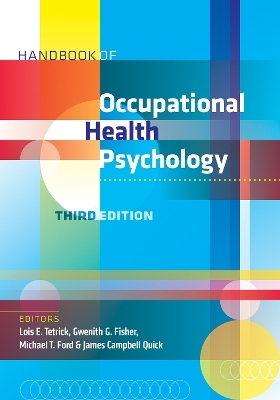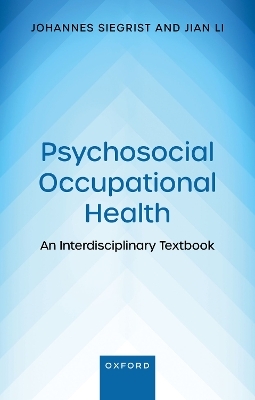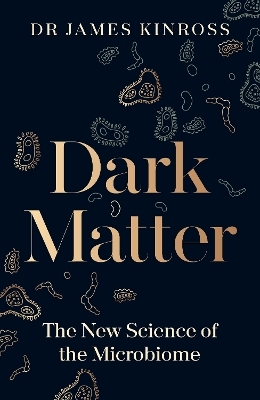
Pediatric Environmental Health
American Academy of Pediatrics (Verlag)
978-1-61002-218-7 (ISBN)
Significantly revised and updated, the fourth edition of this popular AAP policy manual helps you identify, prevent, and treat pediatric environmental health problems.
This comprehensive guide puts critical children's health information and answers to parents' questions at your fingertips. From asbestos to radiation, ultraviolet rays, pesticides, asthma, lead, tobacco, and child care and school environments—current information on an exhaustive range of environmental health issues is included.
Most chapters on chemical and physical hazards are organized in sections that describe the pollutant, routes of exposure, systems affected, clinical effects, diagnostic methods, treatment, and prevention of exposure and include suggested responses to questions that parents may ask.
Topics include
Addressing Environmental Health in Primary Care
Food and Water
Chemical and Physical Exposures
Public Health Aspects of Environmental Health
Emerging Technologies
And more
Ruth A. Etzel, MD, PhD, FAAP is an internationally recognized pediatrician, environmental epidemiologist, and preventive medicine specialist. She performed the first study to document that children with secondhand exposure to tobacco smoke had measurable exposure to nicotine. Her pioneering work led to nationwide efforts to reduce indoor exposure to tobacco, including the ban on smoking in US airliners. She also produced the first research to show that exposure to toxigenic molds in the home could be dangerous to infants' health. She served on the AAP Committee on Environmental Health from 1986 to 1995 and chaired it from 1995 to 1999. From 2009-2012 she led the World Health Organization's activities to protect children from environmental hazards. She is the co-editor of the Textbook of Children's Environmental Health. Sophie J. Balk, MD, FAAP is a general pediatrician at the Children's Hospital at Montefiore and Professor of Pediatrics at the Albert Einstein College of Medicine in Bronx, NY. Her academic work focuses on educating clinicians about pediatric environmental health. She is a past member and chairperson of the AAP Council on Environmental Health, and a past member of the AAP Section on Tobacco Control Executive Committee. She has served as Associate Editor of the 4 editions of Pediatric Environmental Health. Dr. Balk has published and lectured on skin cancer prevention, tobacco issues, and other environmental health issues relevant to pediatric practice.
I. Background: Addressing Environmental Health in Primary Care
01 Introduction
02 History and Growth of Pediatric Environmental Health
03 Children's Unique Vulnerabilities to Environmental Hazards
04 Individual Susceptibility to Environmental Toxicants
05 Taking an Environmental History and Giving Anticipatory Guidance
06 Laboratory Testing of Body Fluids and Tissues
07 Environmental Measurements
08 Toxic or Environmental Preconceptional and Prenatal Exposures
II. Environments
09 Built Environment
10 Child Care Settings
11 Schools
12 Work Places
13 Waste Sites
14 Environmental Health Considerations for Children from Low- and Middle-Income Countries
III. Food and Water
15 Human Milk
16 Environmental Concerns and Contaminants of Infant Formula
17 Water
18 Food Safety
19 Herbs, Dietary Supplements, and Other Remedies
IV. Chemical and Physical Exposures
20 Air Pollutants, Indoor
21 Air Pollutants, Outdoor
22 Alternative Nicotine Delivery SystemsX
23 Arsenic
24 Asbestos
25 Cadmium, Chromium, Manganese, and Nickel
26 Carbon Monoxide
27 Cold and Heat
28 Electric and Magnetic Fields
29 Endocrine Disrupting Chemicals
30 Gasoline and Its Additives
31 Ionizing Radiation (Excluding Radon)
32 Lead
33 Mercury
34 Nitrates and Nitrites in Water
35 Noise
36 Perfluoroalkyl and Polyfluoroalkyl Substances (PFAS)X
37 Persistent Organic Pollutants - DDT, PCBs, PCDFs, and Dioxins
38 Persistent Toxic Substances
39 Personal Care ProductsX
40 Pesticides
41 Plasticizers
42 Radon
43 Tobacco Use and Tobacco Smoke Exposure
44 Ultraviolet Radiation
V. Special Topics
45 Antimicrobial Use and Resistance in Animal Agriculture
46 Arts and Crafts
47 Asthma
48 Birth Defects and Other Adverse Developmental Outcomes
49 Cancer
50 Chelation (Non-Approved Use of for ""Environmental Toxicants"")
51 Chemical-Biological Terrorism
52 Developmental Disabilities
53 Drug (Methamphetamine) Laboratories
54 Emerging Technologies and Materials
55 Environmental Disasters
56 Environmental Equity
57 Ethical Issues in Environmental Health Research
58 Global Climate Change
59 Green Offices and Practice SustainabilityX
60 Idiopathic Environmental Intolerance
61 ObesityX
62 Unconventional Gas Extraction (Fracking)X
VI. Public Health Aspects of Environmental Health
63 Environmental Health Advocacy
64 Precautionary Principle
65 Risk Assessment, Risk Management, and Risk Communication
66 Toxic Substances Control Act (TSCA)X
VII. Resources
A Pediatric Environmental Health Specialty Unit (PEHSU) ProgramX
B Resources for Pediatric Environmental Health
C Curricula for Environmental Education and Environmental Health Science Education in Primary and Secondary Schools
D AAP Policy Statements - COEH
E Common Abbreviations
F Chairs of the COEH
| Erscheinungsdatum | 05.02.2019 |
|---|---|
| Mitarbeit |
Stellvertretende Herausgeber: Sophie J. Balk |
| Verlagsort | Elk Grove Village |
| Sprache | englisch |
| Maße | 152 x 229 mm |
| Gewicht | 1620 g |
| Themenwelt | Medizin / Pharmazie ► Gesundheitswesen |
| Medizin / Pharmazie ► Medizinische Fachgebiete ► Arbeits- / Sozial- / Umweltmedizin | |
| Medizin / Pharmazie ► Medizinische Fachgebiete ► Pädiatrie | |
| Studium ► Querschnittsbereiche ► Klinische Umweltmedizin | |
| ISBN-10 | 1-61002-218-1 / 1610022181 |
| ISBN-13 | 978-1-61002-218-7 / 9781610022187 |
| Zustand | Neuware |
| Haben Sie eine Frage zum Produkt? |
aus dem Bereich


